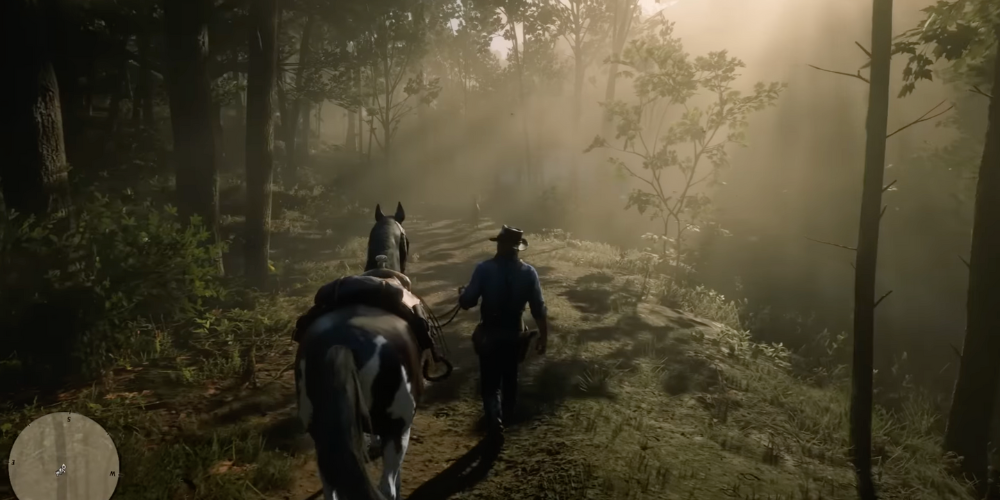The Evolution of Characters in The Last of Us Part II: A Comprehensive Overview of Character Arcs and Personalities
- 2024-07-16 10:50

In gaming history, few video games have resonated with the depth of the human condition as profoundly as The Last of Us Part II. Equally captivating and unsettling, the game drives players on a journey of moral reflection, soaked in grim reality and uncomfortable questions. This article will delve into the in-depth exploration and understanding of its characters and their evolution, lending rich insights into their narratives, arcs, and personalities.
A Gritty Protagonist—Ellie's Arc
Ellie, the seemingly invincible protagonist of the previous game, confronts unsettling realities as she traverses a post-apocalyptic world. As we follow her pursuit for justice, Ellie's relentless determination fuels her transformation from a hopeful teenager to a hardened survivor. Her evolution arguably encapsulates the gaming franchise's core spirit, provoking conversations about the true cost of revenge and the savage nature of desperation.
Duality in Character - Ellie and Abby
Abby's initial introduction as an antagonist comes as a provocative element in the world of The Last of Us Part II. As opposed to the traditional portrayal of villains in gaming narratives, Abby is portrayed with layers of complexity, depth, and human emotions that make her intriguing to players. It isn't merely her actions that make her provocative; rather, the unexpected shift in perspective that the game masterfully offers compels players to comprehend her backstory, motivations, and the driving force behind her actions.

The game promptly immerses players into the realities of both Ellie and Abby, allowing them to journey through their unique experiences, emotions, and responses in their respective quests, particularly their approach toward grief, loss, and anger. The narrative tension between these two characters becomes increasingly palpable as players navigate the intricacies of both their arcs, lending more complexity to the narrative. The subtle way players are thrust into experiencing both perspectives deepens their emotional connection and understanding, making the experience thoughtful, reflective, and deeply consequential.
By juxtaposing Ellie and Abby's paths, the game unveils a compelling exploration of duality. It effectively showcases their individual characteristics, echoing their strengths, flaws, determination, and vulnerabilities. This well-crafted duality incites turmoil and introspection in players, driving them to draw parallels and contrasts between these key characters. It ultimately invites players into deeper reflection—on their personal interpretations of morality, vengeance, altruism, and redemption, causing them to question their initial prejudice for Abby and their unyielding sympathy for Ellie.
Redefining Loyalty - Joel and Tommy

Joel and Tommy's arcs serve as powerful examinations of loyalty, often expressed through the harsh lens of sacrifice. Joel's seemingly unforgivable actions highlight his fierce loyalty towards Ellie, drawing a clear line between paternal love and objective morality. Tommy, on the other hand, grapples with his loyalty towards his brother and his failing quest for vengeance, providing another perspective on loyalty and a stark counterpoint to Joel's trajectory.
Search for Identity - Dina and Jesse
Dina and Jesse are two crucial characters that serve to enrich the narrative texture of The Last of Us Part II. They act as conduits through which the game complexly broadens its exploration of identity. Representing narratives that are starkly different from Ellie and Abby, their inclusion introduces a myriad of new perspectives, effectively expanding the game's character spectrum.

Dina emerges not merely as Ellie's love interest but becomes a significant pillar in her emotional life. Their shared experiences, mutual struggles, and traumas lend depth to their relationship, making it an essential part of Ellie's identity. With her unique backstory and tribulations, the narrative intimately wraps around Dina, creating an emotional tapestry that renders her journey an engaging exploration of love, life, and loss. Her depiction, thus, allows players to delve into deeper aspects of emotional bonds and personal engagements in the brutal post-apocalyptic reality.
Jesse, on the other hand, follows a distinct idiosyncratic arc through his interactions with both Ellie and Dina. His evolving dynamic with Ellie and his romantic pursuit of Dina carve out a unique place for him in the game. His storyline echoes the subtle struggle for identity and acceptance as he navigates complex relationships and difficult circumstances in the harsh world. His representation in the narrative, therefore, edges the game towards a more grounded, nuanced, and inclusive portrayal of diverse identities.

Together, Dina and Jesse reveal their individual strengths, values, and motivations and fuel the narrative's compelling exploration of identity—highlighting how personal experiences and relationships can define identity in a dystopian world.
Hope as an Antidote - Lev and Yara
Lev and Yara's introduction to Abby's narrative shifts the tone of the game towards themes of hope and resilience. Both siblings serve as symbols of humanity's willingness to survive in a world shrouded in hopelessness. Their bond exemplifies an uplifting antidote to the turbulent narrative, reminding players of the healing power of hope and empathy.
Final Thoughts on Character Evolution
Character evolution in The Last of Us Part II transcends the boundary of storytelling in video games, driving players to reflect, question, and empathize. Each character's narrative makes players question their morals, inviting them to play the game and live it, making the game a landmark in narrative-driven gaming history.





